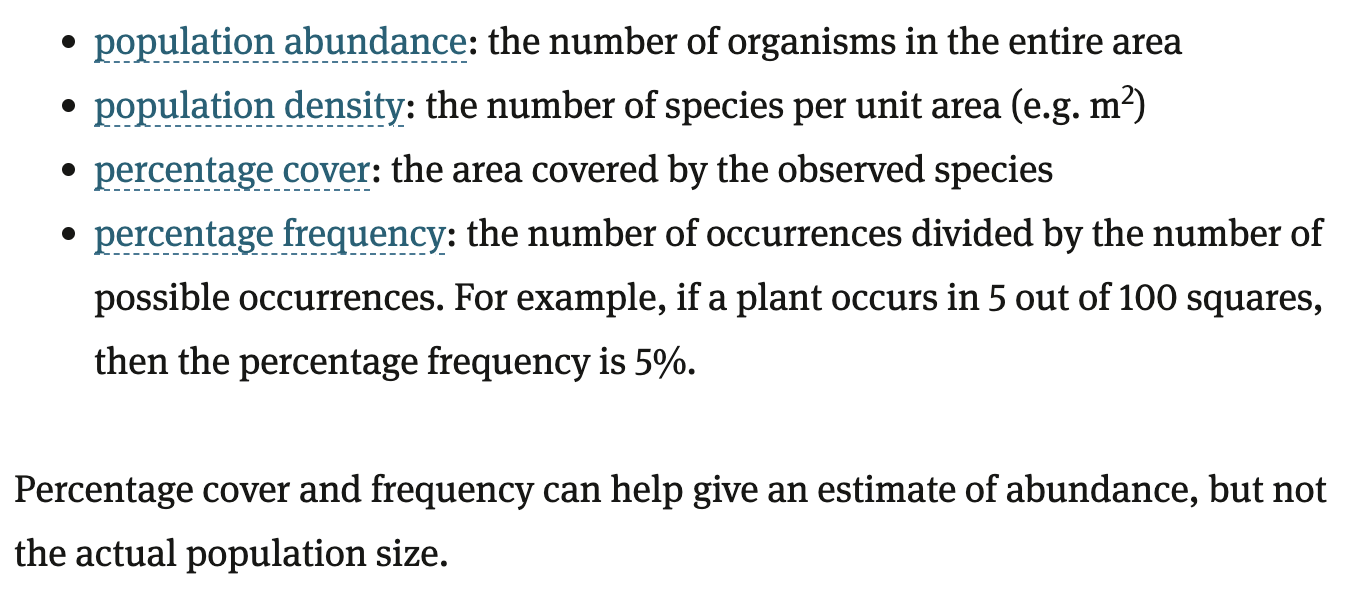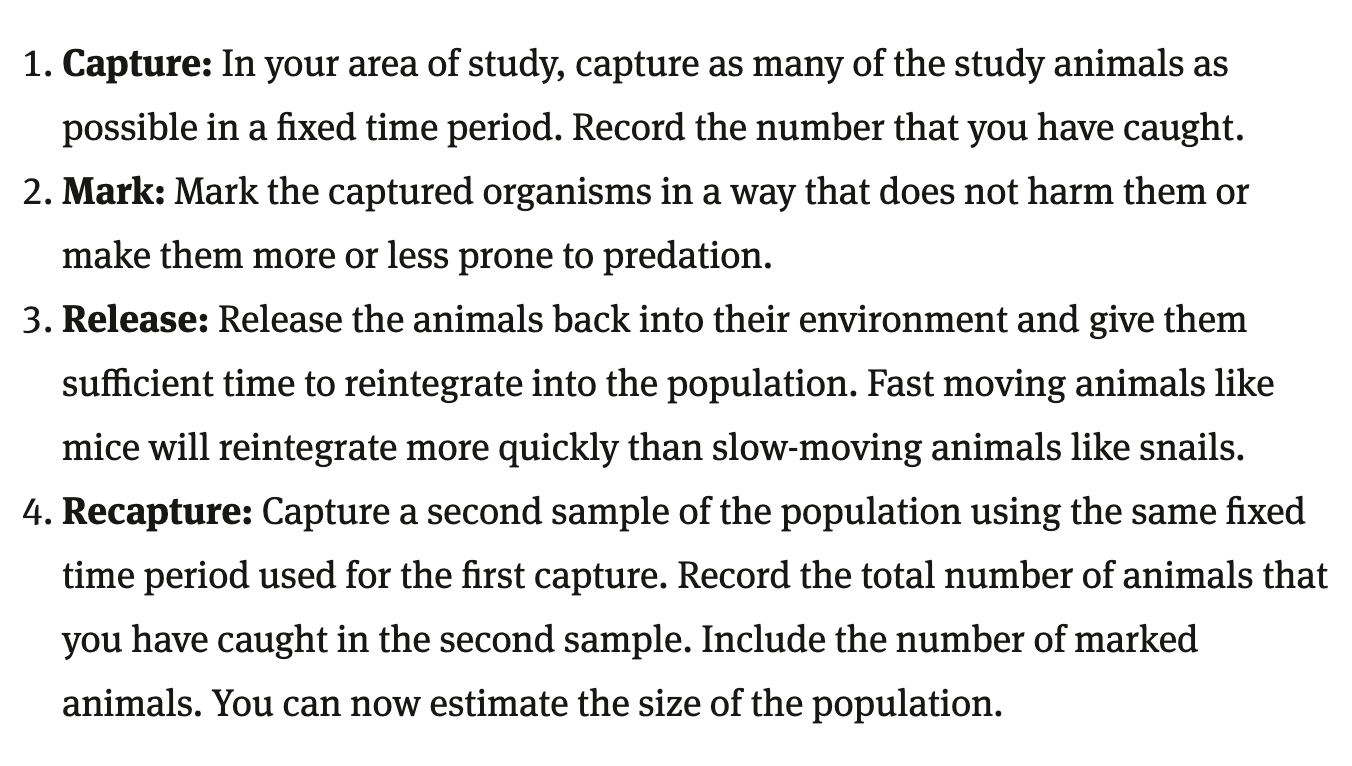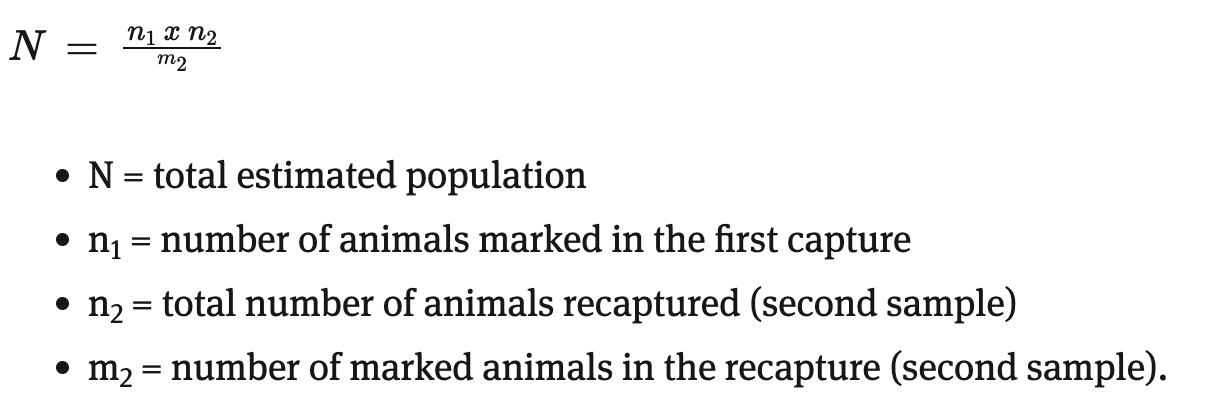Measuring Populations (4)
1/8
There's no tags or description
Looks like no tags are added yet.
Name | Mastery | Learn | Test | Matching | Spaced |
|---|
No study sessions yet.
9 Terms
Sampling non-motile populations (4)
Random sampling
Systematic sampling
Transect sampling
Quadrat sampling
Random sampling
gives every individual in the population an equal chance of selection
eliminate bias
not representative of a whole population
Systematic Sampling
collecting samples at certain intervals, in a regular pattern
easy to use, and is more likely than random sampling to be representative where an environmental gradient is present
possibility for biases —> inadvertently create unrepresentative patterns of information
Transect sampling
marking a transect line through a habitat that you want to observe. This could be done with chalk, tape, string or using other methods. You then collect data along the transect line. If you collect samples at certain intervals along the transect line
Quadrat sampling
Quadrats are square frames used to describe the area of study. Quadrat sampling can be used to estimate: population abundance, population density, percentage cover, and percentage frequency.

Sampling motile populations
Motile populations cannot be easily sampled.
Use capture-mark-release-recapture
capture-mark-release-recapture (1)

capture-mark-release-recapture - The Lincoln Index
A formula used to estimate the size of entire population

Limitations to CMRR (4)
there is a complete mixing within the population before and after the first capture
the marks have not disappeared
the marks are not harmful and do not affect the survival of the individual
there is equal opportunity to catch every individual
there is no immigration, emigration, birth or death between the two sampling times